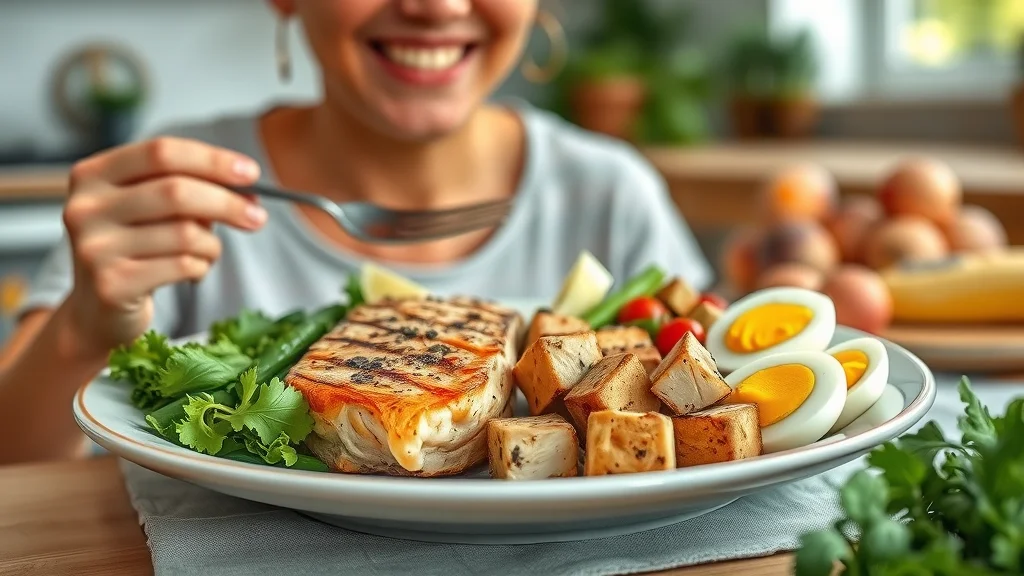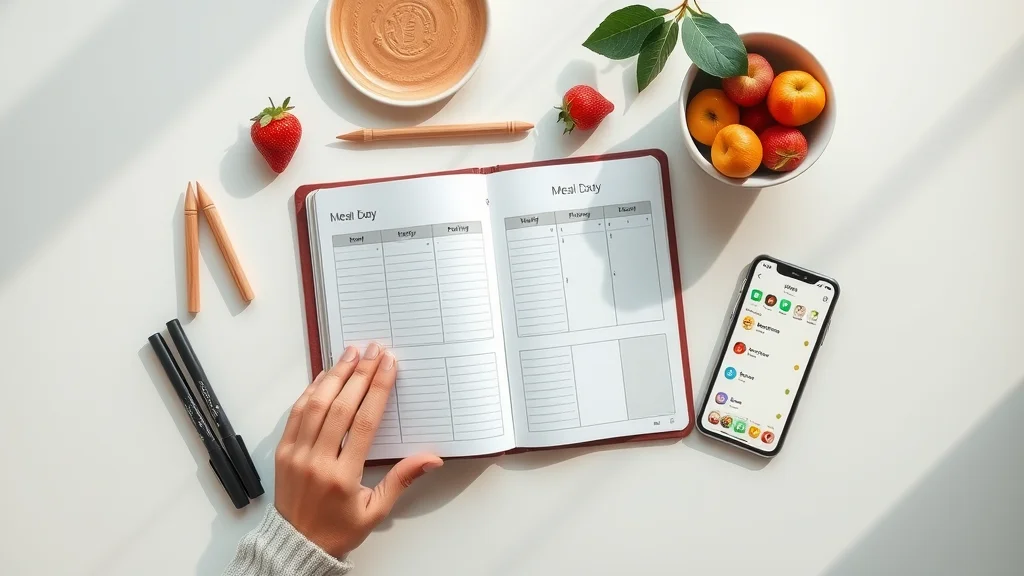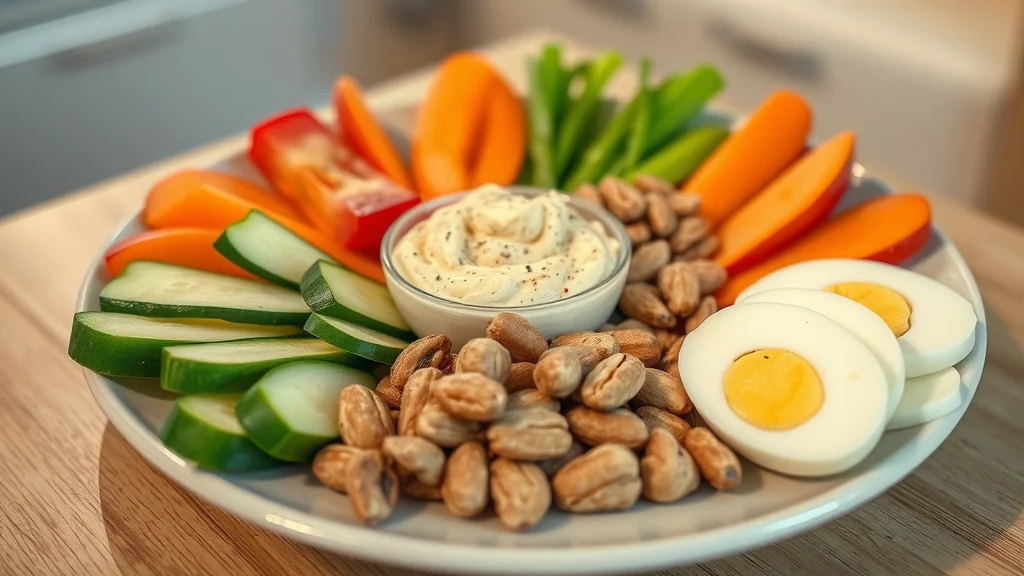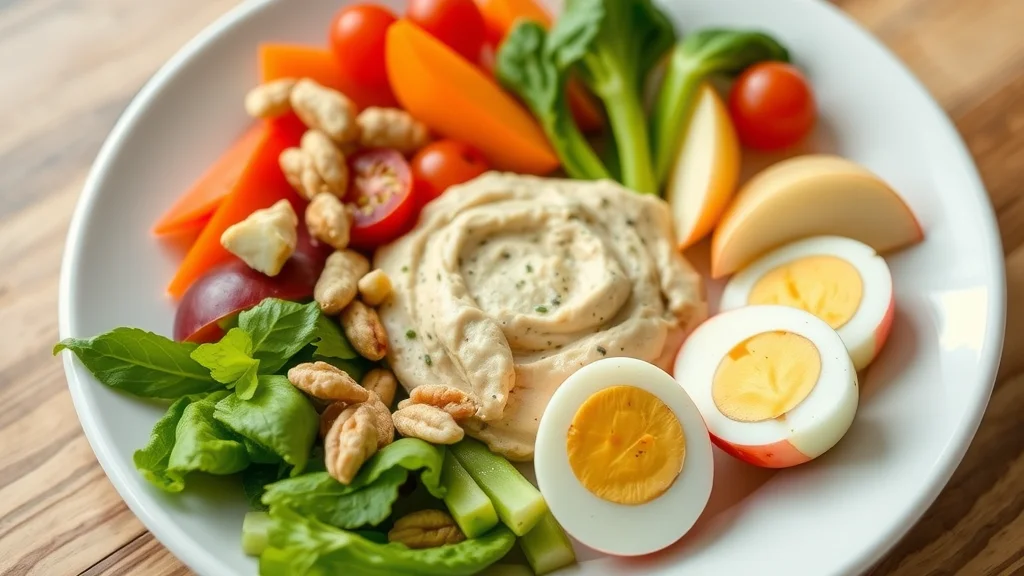Did you know? Nearly 1 in 3 adults worldwide has insulin resistance—yet almost half don’t even realize it. While this silent health crisis quietly sabotages energy, mood, and weight loss goals, most people are left feeling frustrated by generic diet advice that just doesn’t work. If you’re done with guesswork and want real, science-backed insulin resistance diet tips, you’re in the right place.
This guide uncovers exactly how to eat (and what to avoid) so you can finally improve insulin sensitivity, manage your blood sugar, and feel your healthiest—no matter your starting point.
Nearly 1 in 3 adults worldwide has insulin resistance—yet almost half don’t know it.

Shocking Reasons Why You Need Insulin Resistance Diet Tips Now
Did You Know?
Insulin resistance is much more common than you think—and far more serious than most people realize. It’s not just a “pre-diabetes” warning; it’s a condition that quietly raises your risk for weight gain, high blood sugar, heart disease, and even some cancers. What’s more, insulin resistance often goes unnoticed until symptoms snowball into bigger health issues, making early action with targeted insulin resistance diet tips absolutely crucial.
If you’re experiencing unexplained fatigue, stubborn weight around your middle, or frequent cravings for added sugar and carbs, it’s time to pay attention. These are telltale signs that your body isn’t handling glucose as it should—and your current habits may be contributing. Left unchecked, insulin resistance can make weight loss nearly impossible and raise blood sugar levels to dangerous heights. By embracing the right diet strategies now, you’re not just preventing diabetes; you’re regaining control of your metabolism, energy, and long-term wellness.

What You'll Learn: Mastering Insulin Resistance Diet Tips for Weight Loss & Wellness
How to recognize signs of insulin resistance
The role of diet in improving insulin sensitivity
Practical insulin resistance diet tips you can start today
How to build balanced meals with healthy fats, lean protein, and quality carbs
Answers to commonly asked questions about insulin resistance
Understanding Insulin Resistance: The Science Behind the Struggle
What Is Insulin Resistance (and Why Does It Matter for Weight Loss?)
Insulin is a powerful hormone that acts like a key, helping blood sugar (glucose) move from your bloodstream into your cells for energy. When you’re insulin resistant, your cells don’t respond well to insulin’s signal, so your pancreas pumps out even more insulin to keep glucose levels in check. Over time, this extra effort leads to higher insulin and blood sugar levels—a dangerous combo that paves the way for weight gain, high blood pressure, and increased risk for chronic illnesses.
Why does all this matter for your waistline? Because insulin is also a “storage” hormone. When your body produces more and more insulin, it encourages fat storage—especially around the belly. Plus, elevated insulin makes it harder to access stored fat for energy, which is why standard diet and exercise efforts often don’t budge the scale. The good news: scientific research shows the right diet changes can improve insulin sensitivity, helping your body burn fat more efficiently and keep blood glucose levels stable.

How Insulin Resistance Affects People with Insulin Resistance
For people with insulin resistance, everyday life can be a frustrating cycle of tiredness, cravings, and mood swings. High blood sugar levels can lead to frequent urination, increased thirst, and a noticeable drop in energy. Over time, swings between sugar spikes and crashes leave you feeling depleted and reaching for fast sources of added sugar and carbs—setting off a vicious cycle that worsens insulin resistance and makes it even harder to find a way out.
But there’s more: untreated insulin resistance is closely tied to weight gain (especially in the abdomen), and even small imbalances in diet can cause blood sugar spikes after meals. These spikes stress the body’s systems and, if continued, increase the risk of developing type 2 diabetes—or progressing from high blood sugar to full-blown diabetes. That’s why making targeted changes using proven insulin resistance diet tips is one of the most powerful moves you can make for both prevention and reversal.
The Link Between Insulin Sensitivity and Weight Loss
Boosting your insulin sensitivity isn’t just about lowering future health risks—it’s a shortcut to more effective weight loss today. When your cells begin responding properly to insulin, less of it is needed, which means your body is less likely to store fat and more likely to burn it for energy. As insulin resistance improves, blood sugar levels remain steadier, appetite is better regulated, and it’s easier to say no to foods that used to trigger cravings or hunger.
Numerous studies show that improving diet quality—especially by focusing on whole foods, lean proteins, healthy fats, and high-fiber fruits and vegetables—can dramatically ramp up insulin sensitivity within just weeks. This translates into not just quicker weight loss, but also more sustained energy and fewer mood swings. If you’ve ever felt stuck on the diet roller coaster, these are the changes that actually move the needle for insulin resistance and weight control.
Expert Quote
"Eating for insulin resistance isn’t about deprivation—it’s about giving your body the tools to work smarter, not harder." – Dr. Emilia Ross, endocrinologist
Top Insulin Resistance Diet Tips That Work (Backed by Science!)
1. Focus on Lean Protein to Support Insulin Resistance
How much protein do people with insulin resistance need?
Best sources: fish, poultry, tofu, eggs
Lean protein is a powerful ally for anyone dealing with insulin resistance. It helps you feel fuller longer, minimizes blood sugar spikes, and supports lean muscle mass to boost your metabolism. Aim for at least 1–1.2 grams per kilogram of body weight daily—roughly 20–30 grams per meal for most adults.
Focus on fish, chicken and turkey breasts, tofu, beans, and eggs as main protein sources. These options deliver essential amino acids without excess saturated fat often found in red and processed meat. Incorporating lean protein at each meal helps blunt the rise in blood sugar after eating, a huge benefit for people with insulin resistance.

While dietary changes are foundational, incorporating gentle movement after meals can also play a significant role in supporting healthy blood sugar levels. In fact, embracing light activity post-eating has been shown to help regulate glucose and enhance insulin sensitivity, making it a practical addition to your daily routine.
2. Incorporate Healthy Fats and Healthy Fat Choices
Why healthy fats boost insulin sensitivity
Best foods: olive oil, avocados, nuts, seeds
Don’t fear fat—just choose healthy fats! Unsaturated fats found in olive oil, avocados, nuts, and seeds have been shown to improve insulin sensitivity and protect heart health. Unlike saturated and trans fats (common in fried and processed foods), these plant-based fats lower inflammation, reduce blood sugar spikes, and keep you satisfied after meals.
For best results, drizzle olive oil on salads, snack on almonds or walnuts, and add a handful of sunflower seeds to oatmeal or yogurt. Just remember portion control—though these fats are healthy, they’re still high in calories, so a little goes a long way on your journey to weight loss.
3. Add More Fruits and Vegetables for Insulin Resistance
Best fruits and vegetables for people with insulin resistance
Why fiber matters
Fruits and vegetables should be the foundation of any effective insulin resistance diet. They naturally deliver vitamins, minerals, antioxidants, and—crucially—fiber. Fiber slows down how quickly your body absorbs glucose, snacks on blood sugar spikes, and helps maintain steady glucose levels throughout the day. The best picks? Berries, apples, oranges, leafy greens (like spinach and kale), broccoli, and bell peppers, all high in fiber yet low in sugar. Try to make half your plate fruits and vegetables at each meal and snack to keep you full, energized, and on track for improved insulin sensitivity.

4. Reduce Refined Carbs and Processed Foods
Processed foods to avoid
Better alternatives for blood sugar control
The fewer processed foods you eat, the better your blood sugar control. White bread, pastries, sugary drinks, chips, and packaged snacks send sugar levels soaring, triggering more insulin production and worsening insulin resistance. Instead, swap out refined carbs for whole grains like brown rice, quinoa, oat groats, and whole wheat breads and pastas.
These foods are high in fiber and digest slowly, avoiding big blood sugar spikes and crashes. If you do eat packaged items, check labels and avoid anything high in added sugar or artificial ingredients. Small changes—like packing a homemade lunch rather than grabbing fast food—add up dramatically over time.
5. Try the Mediterranean Diet for Insulin Resistance
Benefits for weight loss and insulin sensitivity
Sample meal ideas
The Mediterranean diet is one of the best-studied approaches for improving insulin sensitivity, lowering high blood sugar, and supporting sustainable weight loss. This diet emphasizes whole grains, lean protein (especially fish and seafood), healthy fats from olive oil and nuts, fiber-rich fruits and vegetables, and limited red meat or processed foods.
Enjoy dishes like grilled salmon with quinoa, a Greek salad bursting with veggies, hummus with sliced peppers, or a warm lentil stew. The Mediterranean diet isn’t just about restriction—it’s about abundance and flavor, making it easier to stick with compared to low-carb or calorie-counting plans.

Making Your Own Insulin Resistance Diet Plan: Step-by-Step
How to assess your current eating habits: Start a food journal or tracking app and log everything you eat for 3–5 days. Notice how many times you grab processed foods, sugary snacks, or go too long without meals. These observations set the stage for making targeted improvements.
Setting realistic goals for weight loss and improved insulin resistance: Choose small, doable targets—like adding a serving of vegetables to each meal, or replacing white bread with whole grain. Realistic goals help you stay motivated and create habits that stick, fueling steady and meaningful progress.
Building a weekly insulin resistance meal planner: Plan balanced meals featuring lean protein, healthy fats, high-fiber carbs, and lots of colorful produce. Prep snacks ahead of time—think hard-boiled eggs, pre-chopped veggies, or roasted chickpeas—for quick, blood sugar-friendly options throughout the week.

Insulin Resistance Diet Tips Table: Foods to Love & Foods to Limit
Foods to Emphasize |
Foods to Limit |
|---|---|
Lean protein (fish, poultry, tofu, beans, eggs) |
Processed foods (chips, packaged snacks, sugary cereals) |
Healthy fats (olive oil, avocados, nuts, seeds) |
Refined carbs (white bread, pastries, cakes, white rice) |
Fruits and vegetables (berries, leafy greens, broccoli, peppers) |
Added sugar (sodas, candies, desserts, sweetened drinks) |
Whole grains (quinoa, brown rice, whole wheat bread/pasta) |
Red and processed meats |
Real Life Success: How People with Insulin Resistance Improved Their Health
Emily, 41: After years of fighting stubborn weight, Emily introduced more lean protein and swapped her afternoon cookies for a Greek yogurt bowl with berries and nuts. Within months, she noticed more energy, less hunger, and her doctor reported a major improvement in her insulin sensitivity.
Jamal, 38: Instead of skipping breakfast (which led to strong sugar cravings by lunch), Jamal started his day with eggs and sautéed spinach. This small change helped control his blood sugar and kick-started consistent weight loss.
Priya, 29: After learning to spot “hidden sugars” on food labels, Priya ditched sugary coffee creamers and processed granola bars for fresh fruit and homemade trail mix, enjoying stable blood glucose and fewer crashes.

Mistakes to Avoid: Common Pitfalls of Insulin Resistance Diets
Myth-busting: Why skipping meals backfires—Skipping meals can seem like a quick fix for weight loss, but it often leads to extreme hunger and overeating later. This can spike your blood sugar levels and ultimately worsen your insulin resistance.
Hidden sugars in healthy-looking foods—Granola, flavored yogurts, and “diet” snacks often contain lots of added sugar. Always check labels, and choose foods that have little or no added sugar for better blood sugar control.
Why processed foods are sneaky saboteurs—Even snacks that appear “healthy” can be loaded with refined carbs and oils that worsen insulin resistance. Focusing on whole, minimally processed foods protects your efforts and helps you stay consistent.
People Also Ask About Insulin Resistance Diet Tips
What is the best diet if you have insulin resistance?
Answer
The best diet for insulin resistance is one rich in whole foods, emphasizing lean protein, healthy fats (like olive oil and nuts), high-fiber fruits and vegetables, and unprocessed whole grains. The Mediterranean diet is especially effective thanks to its focus on these elements and its benefits for weight loss and heart health.
How do I lose weight if I'm insulin resistant?
Answer
To lose weight with insulin resistance, prioritize meals with lean protein, healthy fats, and slow-digesting carbs. Consistent, balanced meals stabilize blood sugar, reduce cravings, and help your body burn fat instead of store it. Add regular physical activity to further support insulin sensitivity.
What causes insulin resistance in pregnancy?
Answer
Insulin resistance in pregnancy is often caused by natural hormonal changes that make your body less responsive to insulin. This is normal to an extent, but for some women, it can lead to gestational diabetes. Eating a balanced diet and monitoring glucose levels are key to managing it safely.
Can insulin resistance cause nausea?
Answer
While insulin resistance itself doesn’t usually cause nausea, large and frequent blood sugar swings or episodes of high blood sugar can trigger nausea, especially if they occur alongside other symptoms like tiredness and lightheadedness.
Insulin Resistance Diet Tips For Everyday Life: Snack & Meal Ideas
Easy snacks and meals for people with insulin resistance
Low-prep foods to keep in your kitchen
Eating well for insulin resistance doesn’t have to be complicated. Keep your kitchen stocked with fast, healthy options: pre-chopped veggies with hummus, a handful of almonds, hardboiled eggs, apple slices with peanut butter, plain Greek yogurt with berries, and roasted chickpeas.
For easy meals, try a veggie omelet, grilled chicken salad, or stir fry with tofu and broccoli over brown rice. Prepping portions in advance keeps you on track and curbs last-minute temptations. Remember, the best insulin resistance diet tips are the ones you can fit into your real, everyday life.

When & How Much?
Timing and portions matter. Keep plates balanced (roughly half veggies, a quarter protein, a quarter fiber-rich carbs), and pair carbs with protein/fat for snacks (apple + peanut butter, yogurt + nuts, hummus + veggies). Plan ahead: prep proteins and chopped veggies, read labels for added sugars, and keep quick options on hand. Gentle daily movement (a 10–15 minute walk after meals), consistent sleep, and stress management all improve insulin sensitivity.
Expert Quotes: What Nutritionists Say About Insulin Resistance Diet Tips
"Small, sustainable changes to diet can dramatically improve both weight loss and insulin sensitivity." – Maya Chen, RD
FAQs about Insulin Resistance Diet Tips
Is dairy okay for people with insulin resistance?
Yes, in moderation! Choose unsweetened yogurt, kefir, and hard cheeses. Dairy is best enjoyed as part of a balanced meal and should be limited if you notice dairy spikes your blood sugar.Do I have to avoid all carbs?
Not at all. Prioritize complex carbs—whole grains, beans, and starchy vegetables—over refined, processed carbs. Fiber-rich carbs help avoid sugar spikes and support lasting energy.How soon will I notice results from these insulin resistance diet tips?
Most people start feeling better in one to two weeks as blood sugar levels stabilize, cravings decrease, and energy improves. Weight loss results may take a few weeks longer but are often more sustainable.
Key Takeaways: Best Practices for Effective Insulin Resistance Diet Tips
Focus on balance: combine lean protein, healthy fats, and low-glycemic carbs
Avoid processed foods as much as possible
Increase fiber with fruits and vegetables
Plan meals to stay consistent
Celebrate small wins for better health
Ready to Transform Your Health? Start Using Insulin Resistance Diet Tips Today!
There’s no better time to take charge of your health. Begin with just one or two insulin resistance diet tips today—and watch as small changes create big impacts. Your journey to better energy, easier weight loss, and lifelong wellness starts now.
Conclusion
Effective insulin resistance diet tips aren’t just about what you eat—they’re about empowering yourself with practical, sustainable habits that unlock a healthier future. Start today, and feel the difference.
If you’re ready to take your wellness journey even further, consider exploring the broader lifestyle factors that impact metabolic and cardiovascular health. Building a foundation of essential healthy habits for heart disease prevention can complement your dietary changes, offering a holistic approach to long-term vitality and resilience.
Sources
American Diabetes Association – https://www.diabetes.org/diabetes/insulin-resistance
NCBI – Insulin Resistance and Diet – https://www.ncbi.nlm.nih.gov/pmc/articles/PMC7917447/
CDC – https://www.cdc.gov/diabetes/library/features/insulin-resistance.html
To further enhance your understanding of managing insulin resistance through diet, consider exploring the following authoritative resources:
“Diet Tips for Insulin Resistance”: This comprehensive guide outlines dietary strategies to improve insulin sensitivity, emphasizing the importance of regular exercise, weight management, and balanced nutrition. (healthline.com)
“Insulin Resistance Diet: Foods to Focus On”: This article provides detailed recommendations on foods that can help manage insulin resistance, including whole grains, lean proteins, and non-starchy vegetables, while advising on foods to avoid. (health.clevelandclinic.org)
These resources offer practical advice and evidence-based strategies to help you effectively manage insulin resistance through dietary choices.
 Add Row
Add Row  Add
Add 




Write A Comment